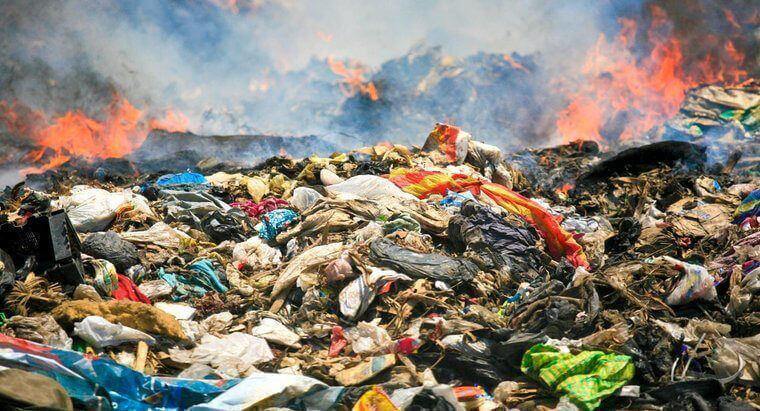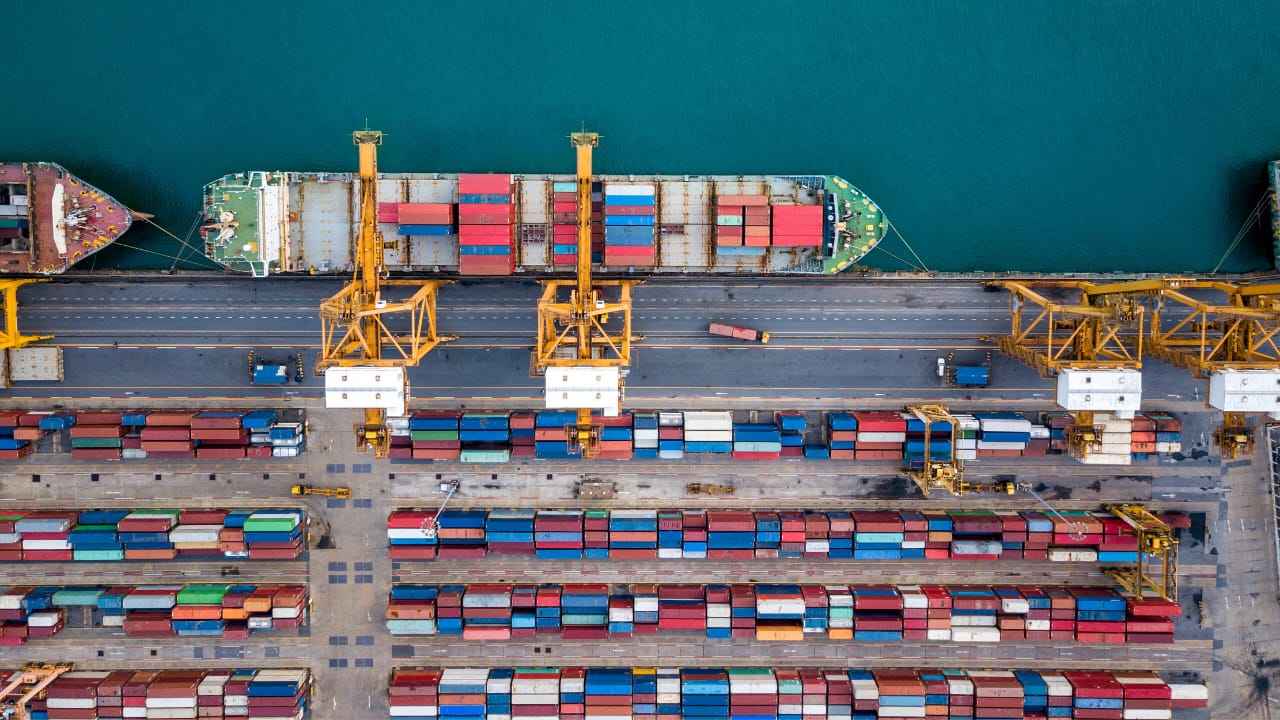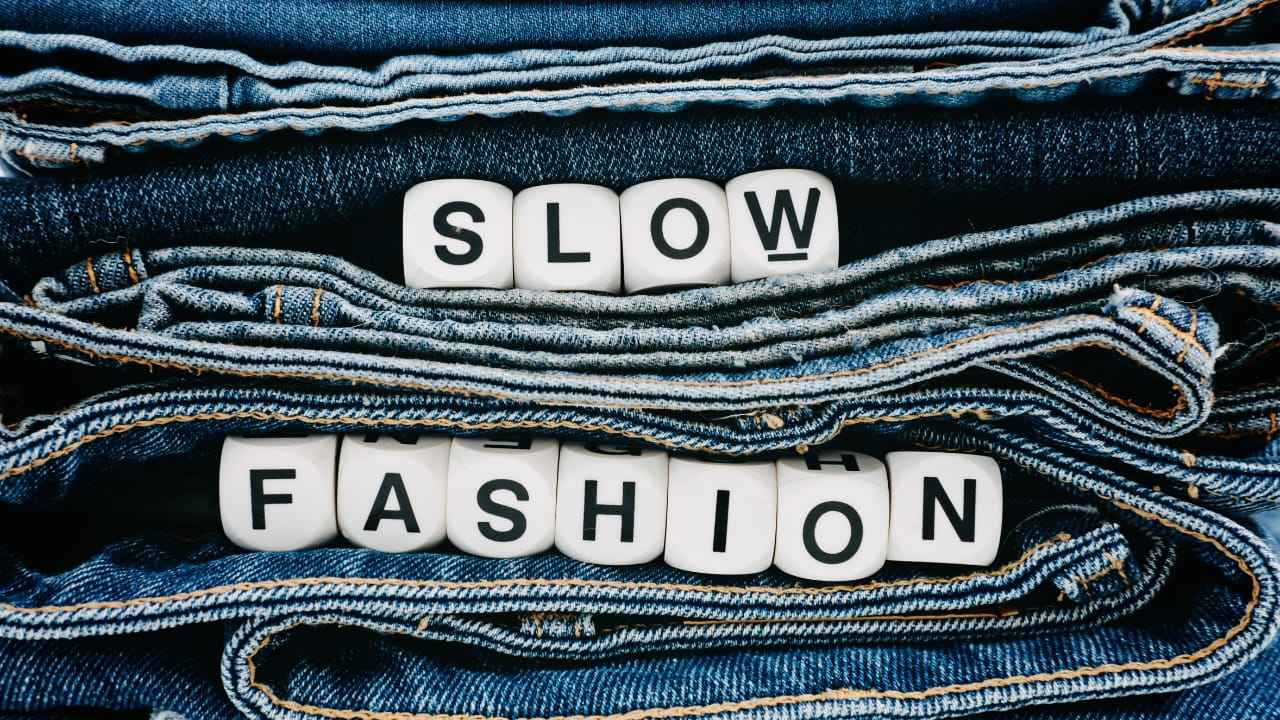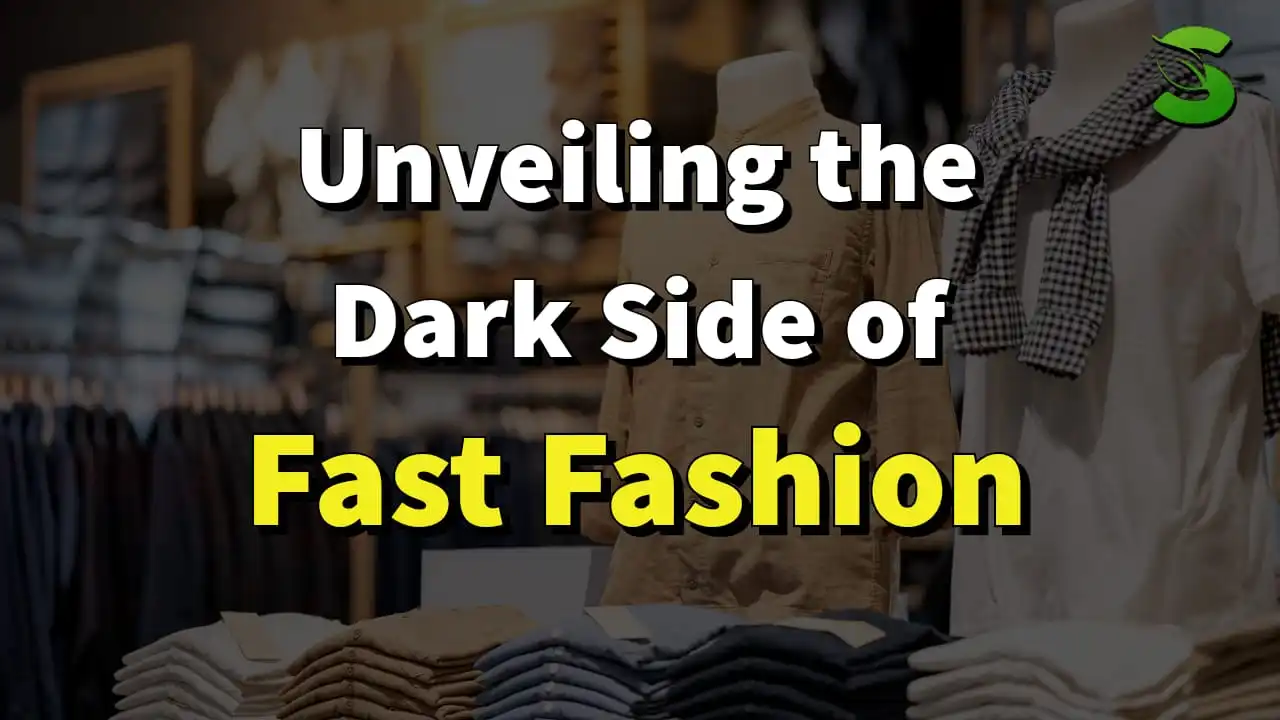Fast Fashion, a term synonymous with quick trends and affordable clothing, has become a global phenomenon. As it captivates consumers with its rapid turnover of styles, there’s an underlying darkness that often goes unnoticed. This article delves into the intricacies of the Dark Side of Fast Fashion, shedding light on its ethical dilemmas and environmental impact.
The Rise of Fast Fashion
In the not-so-distant past, fashion cycles operated on a seasonal rhythm, with designers unveiling their collections a few times a year. However, the paradigm shift known as Fast Fashion has disrupted this traditional cadence. Fast Fashion emerged as a force to be reckoned with, transforming the industry and the way consumers approach clothing. It wasn’t merely a shift; it was a seismic change that turned the fashion landscape into a dynamic, ever-evolving phenomenon.
Fast Fashion’s ascent can be traced back to the late 20th century, where brands began to capitalize on globalization, leveraging cheap labor and rapid production to swiftly bring runway trends to the masses. Zara, H&M, and Forever 21, among others, pioneered this movement, introducing a business model that prioritized speed and affordability. The allure was irresistible – consumers could now mimic the latest catwalk looks without breaking the bank.
This rapid turnover of styles, from design conception to store shelves, created a sense of immediacy that resonated with consumers in a fast-paced digital age. Social media platforms became conduits for the dissemination of trends, further fueling the demand for quick, accessible fashion. Fast Fashion’s success wasn’t just about selling clothes; it was about selling an experience, a lifestyle that promised constant reinvention and up-to-the-minute style.
As a result, what was once a niche market strategy burgeoned into a dominant force, infiltrating every corner of the globe. Fast Fashion transcended socio-economic boundaries, making trendiness accessible to a wide array of consumers. The once-exclusive world of high fashion found itself competing with fast, affordable alternatives that mirrored the latest runway hits.
The rise of Fast Fashion also coincided with the digital revolution, where e-commerce platforms made trend-driven clothing just a click away. The convenience of online shopping and the promise of ‘get it now’ fueled the fire, solidifying Fast Fashion as a cultural phenomenon. Today, the industry stands at a crossroads, with Fast Fashion influencing not just what we wear but how we perceive and consume fashion. The rapid turnover of trends, once seen as a virtue, is now under scrutiny, with increasing awareness of its ethical and environmental repercussions.
In essence, the rise of Fast Fashion is a tale of speed, accessibility, and a redefined relationship between consumers and their wardrobes. Yet, as we explore further, the shadows cast by this meteoric rise reveal a complex narrative, one that demands introspection and consideration for the long-term impacts on both the industry and the world at large.
Impact on Workers

Behind the glitz and glamour of the fashion runway lies a sobering reality for the workers entrenched in the fast-paced world of Fast Fashion. The impact on workers within this industry is profound, marked by a series of ethical and labor-related challenges. As demand for trendy, affordable clothing escalates, so does the pressure on the workforce, often leading to exploitation in the pursuit of ever-changing styles.
One of the most pressing issues is the prevalence of sweatshops, where workers, often in developing countries, endure long hours and substandard working conditions. The drive to produce garments quickly and inexpensively has led to a system where employees are subjected to meager wages and inadequate labor rights. This exploitation, hidden beneath the seams of our trendy outfits, casts a shadow on the very essence of Fast Fashion.
The relentless pace of production, a defining characteristic of this industry, results in a constant demand for output, leaving workers with little time for rest or leisure. The dark side of Fast Fashion is evident in the stories of individuals working tirelessly to meet unrealistic quotas, their well-being sacrificed for the sake of meeting consumer demands.
Moreover, the lack of job security and minimal wages perpetuate a cycle of poverty for many workers. As brands vie for the lowest production costs to maintain competitive pricing, it is often the workers who bear the brunt of this relentless pursuit of affordability. The fashion industry’s race to the bottom in terms of cost inadvertently exploits those who can least afford it.
The impact on workers extends beyond economic considerations. There are instances of hazardous working conditions, with little regard for occupational safety. From exposure to harmful chemicals to inadequate protective measures, the occupational hazards associated with Fast Fashion underscore the urgent need for ethical reforms.
As consumers, it is imperative to recognize the human cost behind the garments we purchase. The seemingly harmless act of buying a trendy shirt or dress may unknowingly contribute to a system that perpetuates labor exploitation. Acknowledging the impact on workers is the first step toward fostering a more ethical and sustainable fashion industry. By advocating for fair labor practices, supporting brands committed to worker welfare, and demanding transparency in the supply chain, consumers can play a pivotal role in reshaping the narrative and mitigating the human toll of Fast Fashion.
Fast Fashion Environmental Impact

The allure of affordable, trendy clothing in Fast Fashion comes at a significant cost – an environmental toll that extends far beyond the runway. The industry’s rapid production cycles, disposable fashion culture, and resource-intensive practices contribute substantially to environmental degradation, presenting a formidable challenge to the health of our planet.
One of the foremost environmental concerns is the excessive water consumption associated with Fast Fashion. From the cultivation of raw materials like cotton to the dyeing and finishing processes, water is a vital but overexploited resource in the fashion supply chain. Runoff from dyeing processes often contaminates water sources, posing a threat to aquatic ecosystems and the communities that depend on them.
Moreover, the disposable nature of Fast Fashion exacerbates the issue of textile waste. With trends changing at an unprecedented pace, clothing is discarded at an alarming rate. Landfills become inundated with non-biodegradable materials, contributing to the growing crisis of textile pollution. The synthetic fibers prevalent in many Fast Fashion garments can take centuries to decompose, perpetuating the environmental impact long after they are discarded.
The reliance on cheap and environmentally harmful materials further compounds the industry’s ecological footprint. From petroleum-based synthetic fabrics to the extensive use of pesticides in conventional cotton farming, Fast Fashion choices often prioritize cost over sustainability. This not only depletes non-renewable resources but also introduces harmful chemicals into the environment.
Fast Fashion’s carbon footprint is another pressing concern. The transportation of raw materials and finished goods across the globe contributes to greenhouse gas emissions. The energy-intensive processes involved in manufacturing and transportation, coupled with the carbon footprint of disposable fashion, collectively make the industry a significant contributor to climate change.
As consumers become increasingly aware of these environmental consequences, there is a growing call for sustainable alternatives. Ethical and eco-friendly fashion brands are emerging, emphasizing responsible sourcing, transparent supply chains, and the use of sustainable materials. The fashion industry, propelled by consumer demand, is beginning to recognize the urgency of adopting more environmentally friendly practices.
In the quest for a greener future, understanding the environmental impact of Fast Fashion is paramount. By making informed choices, supporting sustainable brands, and advocating for systemic change, consumers can play a pivotal role in steering the fashion industry towards a more environmentally conscious path. The urgency of addressing these issues is clear – it’s time for the fashion industry to evolve beyond trends and prioritize the well-being of the planet.
Supply Chain Issues in Fast Fashion

The intricate web of the fashion supply chain, a complex network spanning continents, is rife with issues that often remain hidden behind the glossy facade of Fast Fashion. From raw material sourcing to the hands of consumers, the supply chain in this industry is marred by a lack of transparency, ethical concerns, and environmental repercussions.
One prominent issue is the prevalence of unethical labor practices within the supply chain. The race to produce clothing at an unprecedented speed and low cost has led to the exploitation of workers in various stages of production. Many brands outsource manufacturing to countries with lax labor regulations, creating an environment where workers face substandard wages, long working hours, and often hazardous conditions.
Transparency, or the lack thereof, is a significant challenge in the Fast Fashion supply chain. Consumers are often kept in the dark about the origin of materials, the conditions in which garments are produced, and the environmental impact of the manufacturing processes. This lack of visibility makes it challenging for consumers to make informed choices and hold brands accountable for their practices.
The issue of overproduction is another critical aspect of the supply chain problem. Fast Fashion’s business model relies on producing large quantities of clothing quickly to meet ever-changing trends. However, this often results in excess inventory, leading to overstocked shelves and, ultimately, contributing to the pervasive problem of textile waste. Unsold garments are either dumped in landfills or incinerated, further intensifying the industry’s environmental impact.
Additionally, the environmental toll extends to the sourcing of raw materials. The demand for cheap and fast production has led to the widespread use of resource-intensive materials, such as conventional cotton and petroleum-based synthetics. The cultivation of these materials involves heavy pesticide use, depleting soil quality and contributing to biodiversity loss.
Addressing supply chain issues in Fast Fashion requires a comprehensive overhaul of industry practices. Brands are increasingly being called upon to adopt transparent sourcing practices, prioritize ethical labor conditions, and embrace sustainable production methods. Initiatives such as certification programs for eco-friendly materials and fair labor practices are steps in the right direction, but systemic change is essential.
As consumers, understanding the complexities of the supply chain empowers us to make choices aligned with ethical and sustainable values. Supporting brands that prioritize transparency, fair labor practices, and environmentally friendly sourcing is a collective step towards reshaping the Fast Fashion supply chain for a more responsible and conscientious industry.
Fast Fashion vs. Sustainable Alternatives

In the realm of fashion, a stark dichotomy exists between the breakneck pace of Fast Fashion and the conscientious strides of sustainable alternatives. This section explores the fundamental differences between these two paradigms, shedding light on the ethical and environmental considerations that define the choices consumers make when filling their wardrobes.
The Transient Nature of Fast Fashion:
Fast Fashion thrives on rapid production cycles, swiftly bringing runway trends to mass markets. It’s a world where styles are fleeting, and clothing is often considered disposable. The allure lies in affordability and the ability to replicate the latest designer looks at a fraction of the cost. However, this comes at a hidden price – a trail of environmental degradation and ethical concerns within the industry’s supply chain.
Choosing a Greener Path:
Sustainable alternatives, on the other hand, represent a paradigm shift towards responsible and ethical fashion. These alternatives prioritize longevity, durability, and eco-friendly practices. The emphasis is on quality over quantity, encouraging consumers to invest in timeless pieces that withstand the test of trends and time. Sustainable fashion seeks to minimize the ecological footprint, from the sourcing of materials to the manufacturing process and, ultimately, the longevity of the garments.
Embracing Eco-Friendly Alternatives:
While Fast Fashion relies on resource-intensive materials like conventional cotton and synthetic fabrics, sustainable alternatives champion eco-friendly materials. These may include organic cotton, recycled fibers, and innovative materials like Tencel or hemp. The cultivation and processing of these materials prioritize environmental sustainability, reducing the reliance on harmful chemicals and mitigating the ecological impact of fashion production.
The Vicious Cycle of Overconsumption:
Fast Fashion perpetuates a culture of overconsumption, where trends change rapidly, and clothing turnover is constant. This cycle encourages a throwaway mentality, contributing to the staggering amount of textile waste that ends up in landfills. Sustainable alternatives, conversely, advocate for conscious consumption. They promote timeless designs and encourage consumers to invest in quality pieces that endure, reducing the demand for constant replacements.
Navigating Towards a Greener Future:
As consumers become increasingly aware of the environmental and ethical implications of Fast Fashion, there’s a growing movement towards sustainable choices. Ethical fashion brands are gaining prominence, offering consumers the opportunity to align their values with their purchasing decisions. By supporting these alternatives, consumers play a pivotal role in steering the industry towards a more responsible and sustainable future.
In essence, the choice between Fast Fashion and sustainable alternatives is not just a decision about clothing; it’s a decision about values, ethics, and the kind of world we want to shape through our choices. As the fashion landscape evolves, the push towards sustainability signifies a collective desire for an industry that not only reflects our style but also respects our planet and the people who contribute to the creation of our wardrobes.
Social Media’s Pivotal Role in Fast Fashion

In the digital era, social media has emerged as a powerful catalyst, shaping trends and influencing consumer behavior. Nowhere is this more evident than in the dynamic world of Fast Fashion. Social media platforms act as virtual runways, propelling styles from the catwalk to the closets of millions within a blink of an eye. This section delves into the multifaceted role of social media in the Fast Fashion ecosystem, exploring its impact on trends, consumer behavior, and the industry at large.
Influencers, Trends, and the Fast Fashion Ecosystem:
Social media platforms, particularly Instagram, Twitter, and TikTok, have become virtual stages where influencers showcase the latest fashion trends. Influencers, armed with large followings, wield considerable influence over their audience’s purchasing decisions. Fast Fashion brands strategically collaborate with influencers to rapidly disseminate trends, turning once-exclusive styles into mass-market sensations.
The Influential Impact of Influencer Marketing:
Influencer marketing has become a linchpin of the Fast Fashion business model. By aligning with influencers, brands inject trends directly into the feeds of their target demographic. The seemingly effortless integration of these trends into influencers’ lifestyles creates a sense of immediacy and desirability, prompting followers to swiftly adopt the latest styles. This symbiotic relationship between influencers and Fast Fashion brands accelerates the speed at which trends gain traction and become part of the mainstream consciousness.
Hidden Costs Behind Affordable Fashion:
Social media’s role in Fast Fashion, however, is not without its dark side. The relentless pace of trend turnover, fueled by influencers, contributes to a culture of overconsumption. The constant influx of new styles creates a sense of urgency and FOMO (fear of missing out), compelling consumers to continually refresh their wardrobes. The hidden costs of this affordable fashion are borne by the environment, exploited workers, and a culture that prioritizes quantity over quality.
Unveiling the Dynamics:
In the age of social media, trends don’t just emerge; they go viral. A single post or video can propel a fashion item from obscurity to ubiquity overnight. This dynamic has transformed the traditional fashion calendar, compressing it into a perpetual cycle of trend creation and consumption. Fast Fashion brands, adept at leveraging the virality of trends on social media, capitalize on this perpetual motion, keeping consumers in a continuous state of anticipation for the next big thing.
Shaping Consumer Perceptions:
Social media not only influences what consumers wear but also shapes their perceptions of self-worth and identity. The curated images of influencers living seemingly glamorous lives create aspirational ideals. This curated reality often leads to unrealistic standards, impacting individuals’ self-esteem and contributing to the darker side of the fashion industry, where appearance is prioritized over substance.
In navigating the complex interplay between social media and Fast Fashion, consumers hold a pivotal role. By critically examining the narratives presented on these platforms, advocating for transparency in influencer partnerships, and supporting brands that prioritize ethical practices, consumers can exert influence in steering the fashion industry towards a more responsible and balanced future.
The Dark Side of Low Prices in Fast Fashion

The allure of Fast Fashion often hinges on the promise of affordable clothing, enabling consumers to stay on-trend without breaking the bank. However, beneath the surface of these seemingly budget-friendly garments lies a shadowy underbelly – the dark side of low prices in the Fast Fashion industry.
Exploitative Labor Practices:
One of the significant contributors to the low prices of Fast Fashion is the reliance on exploitative labor practices. To keep production costs at a minimum, many brands outsource manufacturing to countries with lax labor regulations. This outsourcing often leads to inadequate wages, poor working conditions, and, in some instances, the utilization of sweatshops. Workers, in their pursuit of meeting demanding production quotas, find themselves trapped in a cycle of exploitation, where the human cost is overshadowed by the affordability of the final product.
Lack of Transparency in the Supply Chain:
The quest for low prices is often accompanied by a lack of transparency in the Fast Fashion supply chain. Consumers are frequently left in the dark regarding the origin of materials, the conditions under which garments are produced, and the overall environmental impact of the manufacturing process. This opacity shields brands from accountability, making it challenging for consumers to make informed choices aligned with their values.
Environmental Toll:
Low prices in Fast Fashion come at an environmental cost. The use of cheap and environmentally harmful materials, such as conventional cotton and synthetic fabrics, contributes to pollution, deforestation, and the depletion of natural resources. The emphasis on rapid turnover and disposable fashion further exacerbates the industry’s carbon footprint, as excess inventory is often discarded in landfills, leading to a cycle of environmental degradation.
Hidden Social and Cultural Expenses:
The pursuit of low prices also has hidden social and cultural expenses. Local economies in countries where manufacturing is outsourced may suffer as a result of unfair trade practices and the exploitation of cheap labor. Additionally, the cultural significance of fashion is diminished when clothing is treated as disposable, contributing to a throwaway culture that devalues the craftsmanship and artistry embedded in traditional garment production.
True Costs Beyond the Price Tag:
The dark side of low prices extends beyond the initial purchase. The true costs are felt by workers facing exploitation, communities grappling with environmental degradation, and a society influenced by a culture of disposable fashion. Consumers, in their pursuit of bargains, unknowingly become contributors to a system that prioritizes affordability over ethical and sustainable practices.
Addressing the dark side of low prices in Fast Fashion requires a collective effort. By advocating for fair labor practices, supporting transparent supply chains, and choosing quality over quantity, consumers can play a pivotal role in reshaping an industry that values people and the planet as much as the price tag. The true cost of fashion is a multifaceted issue, and by acknowledging its complexities, we pave the way for a more responsible and conscientious approach to clothing consumption.
Impact of Fast Fashion on Mental Health

Beyond the visible threads and fabric, the world of Fast Fashion weaves a complex narrative that extends its influence to realms beyond the physical. One such dimension is the subtle yet profound impact on mental health, an aspect often overshadowed by the glitz of trend-driven clothing and affordable prices.
Unrealistic Standards:
Fast Fashion, driven by the constant turnover of trends, has a direct impact on societal standards of beauty and body image. The industry often promotes a narrow, unrealistic ideal that equates beauty with a specific body type. The relentless portrayal of these ideals, reinforced by models and influencers, can contribute to body dissatisfaction and, in some cases, lead to the development of body image issues and low self-esteem.
Psychological Toll of Distorted Beauty Ideals:
The constant bombardment of curated images showcasing ‘perfect’ bodies and flawless appearances takes a toll on individuals’ mental well-being. The pressure to conform to these unrealistic standards can induce anxiety, depression, and a sense of inadequacy. The perpetual comparison to digitally altered images can create an unhealthy mindset, fostering a culture where self-worth is linked to appearance rather than inherent value.
Constant Cycle of Consumerism:
The fast-paced nature of Fast Fashion, with trends evolving rapidly and new collections flooding the market, perpetuates a cycle of consumerism. The pressure to stay on-trend and the fear of missing out (FOMO) can contribute to compulsive buying behavior. This constant pursuit of the next fashionable item can lead to financial strain, reinforcing a cycle of stress and anxiety.
Environmental Concerns and Eco-Anxiety:
Awareness of the environmental impact of Fast Fashion can also contribute to eco-anxiety, a growing concern for individuals worried about the state of the planet. Understanding the ecological toll of disposable fashion and overconsumption can lead to a sense of guilt and unease, especially for those who recognize their contribution to the environmental challenges associated with the industry.
Addressing Mental Health in Fast Fashion:
Acknowledging the impact of Fast Fashion on mental health is crucial for fostering a more responsible industry. Consumers can play a role in promoting positive change by supporting brands that prioritize diverse representation and body positivity. Additionally, embracing a mindset of conscious consumption, where the focus is on quality over quantity, can alleviate the mental strain associated with the constant pressure to keep up with fleeting trends.
In the broader context, advocating for industry-wide changes that prioritize mental well-being, diversity, and inclusivity is essential. By recognizing the interconnectedness of fashion and mental health, we can work towards an industry that not only caters to aesthetic preferences but also promotes positive self-perception and contributes to a healthier, more sustainable mindset.
Corporate Responsibility in Fashion: Shaping an Ethical Future
As the fashion industry faces heightened scrutiny for ethical practices, a crucial shift towards corporate responsibility is underway. This section delves into key aspects:
1. Ethical Sourcing and Labor Practices: Responsible brands champion transparency in supply chains, ensuring fair treatment, just wages, and safe conditions for workers, eliminating exploitative practices like sweatshops.
2. Sustainable Materials and Production Methods: Embracing eco-friendly materials and sustainable production processes, ethical fashion reduces environmental impact, opting for organic cotton, recycled fibers, and energy-efficient manufacturing.
3. Transparency and Accountability: A hallmark of corporate responsibility, brands share supply chain details, manufacturing processes, and environmental impacts, empowering consumers to make informed choices.
4. Social and Cultural Sensitivity: Responsible corporations recognize the cultural significance of fashion, avoiding appropriation, respecting diversity, and ensuring inclusive representation in marketing and advertising.
5. Circular Economy and Waste Reduction: Corporate responsibility includes a focus on a circular economy, with brands designing durable products, encouraging recycling, and implementing initiatives to reduce environmental impact.
6. Investment in Innovation: Ethical brands invest in innovative solutions, supporting research for sustainable materials and technologies, fostering creativity for eco-friendly alternatives.
7. Engagement with Social Issues: In an era of consumer activism, corporate responsibility involves active engagement with societal challenges, aligning with social causes and contributing to philanthropic initiatives.
As the fashion industry moves towards a more ethical future, the commitment to corporate responsibility becomes a linchpin, with brands prioritizing ethical sourcing, sustainability, transparency, and social responsibility, contributing to a fashion landscape that values people, the planet, and positive societal impact.
FAQs
What are the main ethical concerns in Fast Fashion?
Fast Fashion raises ethical concerns related to labor exploitation, environmental degradation, and the promotion of unrealistic body standards.
How does Fast Fashion contribute to environmental problems?
Fast Fashion contributes to environmental issues through excessive water usage, pollution, and the generation of massive textile waste.
Are there alternatives to Fast Fashion?
Yes, sustainable and eco-friendly fashion alternatives exist, promoting ethical practices and environmental responsibility.
How can consumers make a positive impact on the fashion industry?
Consumers can make a positive impact by supporting ethical brands, practicing conscious consumption, and advocating for transparency in the fashion supply chain.
Can technology solve the environmental issues in the fashion industry?
Innovations in sustainable materials and production methods show promise in mitigating the environmental impact of the fashion industry.
Why is corporate accountability crucial in transforming the fashion industry?
Corporate accountability holds brands responsible for their practices, encouraging ethical conduct and pushing the industry towards positive change.
Conclusion
In conclusion, understanding the Dark Side of Fast Fashion is crucial for making informed choices as consumers. By advocating for ethical practices, supporting sustainable alternatives, and demanding accountability, we can collectively contribute to a fashion industry that prioritizes both style and responsibility.
ALSO READ | Sustainable Living vs. Fast Fashion: You Choose







